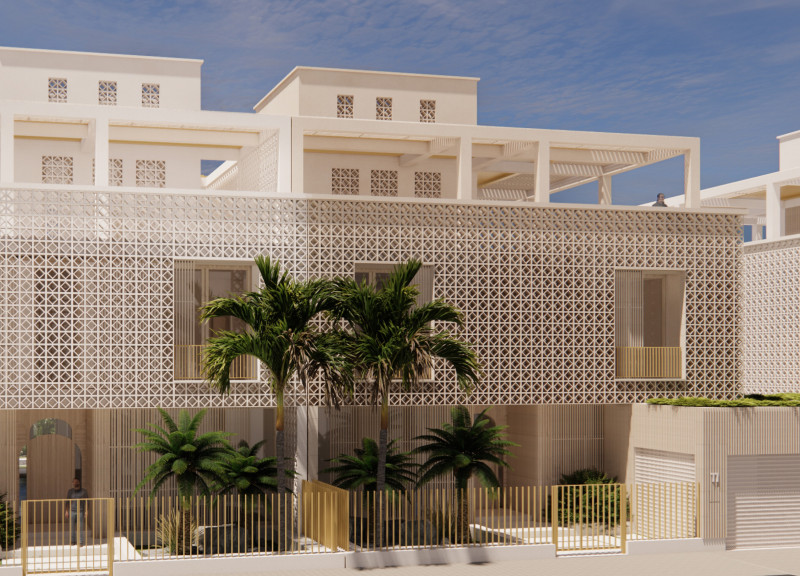5 key facts about this project
At its core, the architecture of this project emphasizes transparency and connectivity, utilizing expansive glass facades that not only enhance natural lighting but also facilitate views of the surrounding landscape. This design choice promotes a seamless interaction between the inside and outside, allowing for a fluid transition that encourages occupants to engage with their environment. The incorporation of outdoor spaces, such as terraces and green roofs, further emphasizes the intent to blur the lines between built and natural spaces, fostering a sense of tranquility and openness.
Functionally, the project is designed to accommodate diverse activities, enhancing its role as a community hub. The layout consists of flexible spaces that can be reconfigured for various uses, whether for collaborative work, public events, or recreational activities. This adaptability is a crucial aspect of the design, responding to the ever-changing needs of the community. Central to the layout is a multipurpose area that serves as a focal point, designed to host gatherings and facilitate social interaction, reinforcing the idea that architecture can cultivate connections among individuals.
In terms of materiality, the project employs a range of thoughtful selections. Concrete forms the structural backbone of the building, offering durability and longevity. Meanwhile, the use of sustainably sourced wood introduces warmth and texture, creating a welcoming interior atmosphere. Complementing these materials, steel has been utilized to enhance structural integrity, particularly in spanning expansive areas without obstructing views. The careful selection of these materials aligns with the project's dedication to sustainability, as they have been chosen not only for their aesthetic qualities but also for their environmental performance.
Unique design approaches are evident throughout the architecture, particularly in how natural elements are integrated into the overall aesthetic. The artisanship showcased in the detailed joinery and finishes reveals a thoughtful consideration for craftsmanship and attention to detail. Additionally, eco-friendly technologies, including solar panels and rainwater harvesting systems, have been embedded within the design, minimizing energy consumption and reducing reliance on municipal resources. This forward-thinking approach positions the project as a model for sustainable architecture, illustrating how modern design can effectively address environmental challenges.
Lighting plays a crucial role in the overall ambiance of the building. The strategic placement of windows and skylights maximizes daylight penetration, creating bright and inviting spaces throughout. This consideration of natural light contributes not only to energy efficiency but also enhances the occupants' well-being, promoting a healthy and positive atmosphere. Nighttime illumination further accentuates the architectural features, creating a visual interest that transforms the building’s presence after dark.
Throughout the project, the design reflects a holistic understanding of its context, with careful consideration of both the immediate surroundings and broader environmental impacts. Landscape elements are carefully integrated into the overall plan, fostering biodiversity and encouraging ecological stewardship. Native plants have been utilized in the landscape design, ensuring minimal water use and promoting local flora and fauna.
Every element of this architecture has been carefully curated to deliver a cohesive experience that balances aesthetic appeal, sustainable practices, and community needs. The project serves as a testament to how thoughtful design can redefine our environments and enhance the quality of life for those who inhabit these spaces. For those interested in gaining a deeper understanding of the architectural design nuances and ideas at play, exploring the project presentation, including architectural plans and sections, will provide additional insights into its impressive architecture and its thoughtful design approach.


 Mina Sava,
Mina Sava, 























